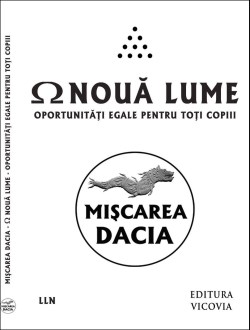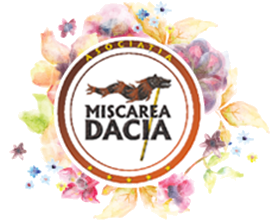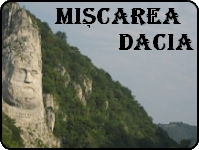HYPATIA
‘The Murder of Hypatia’ (Excerpt: Not in His Image: Gnostic Vision, Sacred Ecology and the Future of Belief by John Lash)

On a spring day in the year 415 C.E., a Pagan noblewoman emerged from the lecture hall attached to the great library of Alexandria and called for her chariot, intending to drive herself home. Although there were many educated Pagan women of high social standing and good education in Alexandria in that era, Hypatia, as she was called, was one of the few who owned and drove her own chariot. A familiar sight to the local populace, she often halted her horses and descended into the street to chat amiably with local people, or to debate issues of philosophy with whomever might wish to engage her. her openness, combined with her kind and elegant manner, won her the admiration and affection of the townsfolk. Hypatia was also active in an official capacity in civic affairs normally dominated by men. “Such were her self-possession and ease of manner, arising from the refinement and cultivation of her mind, that she not infrequently appeared in public in presence of the magistrates, without ever losing in an assembly of men that dignified modesty of comportment for which she was conspicuous, and which gained for her universal respect and admiration.” [1]

Hypatia’s beauty was legendary and equaled only, it was said, by her intelligence. Tall and confident, commanding her chariot with ease, clothed in a long robe and the signature scarf of the teaching class, she must have cut a striking figure in the thriving streets of that most cosmopolitan of cities. No realistic image of her survives.

On that March day in 415, as Hypatia entered a public square near the Caesarean Church where Christian converts were known to gather, she found her path blocked by a menacing crowd. At the head of the group stood a rough-looking man called Peter the Reader who roused those gathered to approach Hypatia and impede her way. “Now this Peter was a perfect believer in all respects of Jesus Christ,” [2] a zealous convert who admired Cyril, the Christian bishop of Alexandria. Recently, when a local prefect prosecuted one of Cyril’s protégé’s for openly attacking Pagan doctrines, Hypatia had sided with the prefect and the man was severely admonished. Cyril had an axe to grind with Hypatia, although he could not afford to look bad in the public eye by acting openly against her. Long after the fateful day, many of the townsfolk wondered if Peter the Reader had not been sent to avenge his master, or perhaps had acted independently, hoping to win the patriarch’s approval. Public opinion held that Cyril, who was on record for calling Hypatia a sorceress, was complicit in the attack.

Peter exhorted the crowd to throw tiles at Hypatia, and pull her from the chariot. Her long robes and scarf proved an advantage to the mob, consisting mostly of rough-handed workmen. They quickly overpowered her by yanking hard on her loose clothing from all sides. Pulled to the ground she struggled in vain to break free and run. The mass of grappling hands now began to strip off her robes. Members of the local populace stood by helplessly, paralyzed by the horror unfolding before their eyes.

The violence of the mob escalated rapidly, its intensity fed by the raucous shouts of Peter the Reader. He called Hypatia a vile heretic and a witch who beguiled people through her beauty and her teachings, which were nothing but the wiles of Satan. Hypatia protested and cried for help, but a stiff blow broke her jaw. In a matter of minutes, she was on her knees in a pool of blood. Crushed under a flurry of blows and kicks, she was rapidly beaten to death. Not content merely to take her life, the mob pounded her naked body to a pulp and tore her limbs off her torso. The number of attackers, and the ferocity of their assault, made it impossible for anyone witnessing the murder to intervene.
When Hypatia was dead, the attitude of the mob shifted abruptly from outrage to triumph. These men, who were self-declared Christians, immediately began to exalt in what they had done. The frenzy of victory was so acute, it could not be satisfied by the beating and dismemberment of the defenseless woman. As if emanating from their pores, some force of inhuman inspiration electrified the haze of violence that fumed around the murderers. Wild-eyed with excitement, several members of the mob ran to the nearby harbor to scoop up the razor-sharp oyster shells to be found there in abundance. They returned and passed out shells, and Peter encouraged his henchmen to scrape every last morsel of flesh from Hypatia’s bones. When the men were done, they took the scraped bones to a place called Cindron and burned them to ashes.

Wisdom Incarnate
Hypatia (pronounced high-PAY-sha) was the daughter of the mathematician Theon of Alexandria, the last known teacher in the age-old tradition of the Mystery Schools, the spiritual universities of antiquity. The year and month of her death are known, the year of her birth is less certain , but 370 C.E. is generally accepted. Thus she would have been around forty-five when she was murdered. Historians have long regarded her death as the event that defined the end of classical civilization in Mediterranean Europe. It signaled the end of Paganism and the dawn of the Dark Ages. (Paganism, the generic term for pantheistic religion in the Western classical world, merits capitalization as much as Christianity.)

Theon was headmaster at the Museum of Alexandria, the place dedicated to the Muses, daughters of the ancient goddess of memory, Mnemosyne. Each of the Muses embodied a “sacred art” such as astronomy, lyric poetry, and history. The nine daughters of Memory presented a model for the curriculum of the Mystery Schools*. Museums today are merely repositories of relics from the past, but the Alexandrian Museum was the setting of higher education. The campus spread along the horseshoe-shaped port dominated by its Pharos, the famous four-hundred-foot-high lighthouse that ranked among the Seven Wonders of the World. It included many independent academies dedicated to subjects as diverse as geometry and sacred dance, and training guilds that produced a constant stream of graduates in fields such as sculpture, botany, navigation, herbology, engineering and medicine. The assemblies and guilds associated with the Royal Library had their own libraries and teaching faculties.

[*Mystery School: An educational center or campus attached to a temple belonging to the network of Pagan Mysteries, consisting of libraries, workshops, gymnasia, and agorae (open spaces for lectures and discussions).]
In the year 400, when she was about thirty, Hypatia assumed the chair of mathematics at the university school. This was a salaried position, equivalent to professorship in a modern university. The daughter of Theon was noted for her mastery of Platonic philosophy and her skill in theurgy, literally “god-working,” a form of magical invocation that might be compared to Jungian active imagination, or, more aptly, advanced practices of visualization in Tantra and Dzogchen. Her dialectical powers were exceptional, honed to a fine edge by her mathematical training. When it came to debating ideas about the divine, “Hypatia eclipsed in argument every proponent of the Christian doctrines in Northern Egypt.” [3] Her Expertise in theology typified the Pagan intellectual class of Gnostics, gnostikoi, “those who understand divine matters, knowing as the gods know,” but she was also deeply versed in geometry, physics, and astronomy.* Ancient learning was multidisciplinary and eclectic, contrasting strongly to the narrow specialization of higher education and the sciences of our time. The word Philosophy means “love (philo) of wisdom (sophia).” To Gnostics, Sophia was a revered divinity, the goddess whose memory they recounted in their sacred cosmology. To the people of her time and setting, Hypatia would have been wisdom incarnate.
In addition to their religious function, the Mysteries provided the framework for education along interdisciplinary lines. The gnostikoi were polymaths, savants, and prolific writers. From around 600 B.C.E. to Hypatia’s time – a period of a thousand years – they produced the countless thousands of scrolls stored in the Royal Library of Alexandria and other libraries attached to Mystery centers around the Mediterranean basin. Hypatia is known to have written a treatise on arithmetic and commentaries on the Astronomical Canon of Ptolemy and the conic sections of Apollonius of Perga. None of her writings survive, but eight ancient sources describe her murder and her accomplishments; the latter, not always in an approving manner. Cyril, whom popular opinion implicated in her murder, became and important theologian known for formulating the doctrine of the Holy Trinity. He was later canonized by the Church, along with other Early Christian ideologues, the so-called Church Fathers, men whose theological polemics and histories of the One True Faith celebrate its triumph over “heretics” such as she.

Hypatia’s accomplishments were not confined to theology and didactics. She was also involved in applied science related to geography and astronomy. Working with a Greek scientist Syneisus, who was proud to be called her student, she invented a prototype or the astrolabe, a device later to prove essential in the navigation of the world oceans for the twinned purposes of conquest and conversion.

Pagan Learning
Hypatia’s birthplace was founded by Alexander the Great on January 20, 331 B.C.E.
For the next 1000 years, until the coming of Islam, it would look to the Mediterranean and the wider world. Alexandria’s full title was “Alexandria by Egypt” – not “in Egypt.” It was founded as an entrpot through which the wealth of Egypt would flow; and within two centuries it would become “the crossroads of the entire world”: the El Dorado of the Hellenistic Age. . . . In the first century A.S. Alexandrian merchants sailed to South India on the monsoon winds, linking up the trade to the Ganges, Vietnam, and China; part of the explosion of ideas and contact initiated by the Age of Alexander. [4]
In Hypatia’s lifetime, her native city was still the greatest cosmopolitan center of antiquity, the undisputed capital of the Western world, comercially, spiritually, and intellectually speaking, but it belonged to an empire teetering on the brink of collapse. She was born around ten years after the initial wave of barbarians, the Huns, poured into Europe , and six years after the Roman Empire was divided geographically between east and west. In her lifetime the Roman legions evacuated Britain, conquered by Julius Ceasar four and a half centuries earlier, and the borders of the empire shook continually from barbarian assaults. In 410, when Hypatia would have been forty, Alaric, chieftan to the Visigoths, captured and sacked Rome, inflicting a mortal blow on the Empire. At that very moment Augustine of Hippo was writing The City of God, a book destined to become the conrnerstone of Catholic doctrine. As the Roman Empire shattered and burned, another imperial entity, the institution of the Catholic Church, was rising in it’s place. A fateful handover of power was in progress.
The Hellenistic era lasted from the death of Alexdander in 323 B.C.E. to 30 B.C.E., when Cleopatra, the last of the Ptolemics, killed herself with the bite of an asp. After Alexander’s death, his empire was divided among three of his generals. The southernmost part, comprising Egypt and Judea (including Jerusalem), became the Ptolemic kingdom. Culture and custom were uniform throughout all three parts of the empire. “Natives of Galilee and Judea wore the same sort of clothes as were worn in Alexandria, Rome or Athens.” [5] The entire southern region, including Palestine, was thriving with Mystery Schools, many of them founded and directed by Gnostics such as Hypatia. [Note: Against the objection that the evidence of Pagan learning is not compatible with Gnostic thought, I would reply: There are plenty of Gnostic elements in Pagan literature-in Hesiod and Aeschylus, for instance-if one knows how to identify them. The prodigious writings of Plutarch, a known initiate, attest to the scope and diversity of the literary outpouring of the Mystery Schools. Usually, the more arcane elements of Gnostic teaching were reserved for intramural discussion in the Mystery cells and were not readily transposed into secular writing. However, when the moment came for the telestai to protest Christian doctrines, these elements found lavish expression both in print and oral discourse. The most complete and explicit text of initiatory instruction is On the Mysteries by Iamblichus, founder of the Neoplatonic school to which Hypatia was said to belong. It is firsthand and coherent, although expressed in a metaphysical idiom that is immensely difficult for the modern mind. The NHC presents an imbalanced, incomplete, and incoherent record of second- and third-hand versions of Gnostic teachings.] In the twilight of the Egyptian dynasties, cross-cultural exchange reached a fever pitch, but the death of Cleopatra brought a change of political regime that would permanently darken the skies of learning. Julius Ceasar’s arrival in Egypt in 47 B.C.E. completed the shift that had begun in 63 B.C.E. when the Roman general Pompey, Ceasar’s greatest rival, had declared Judea a Roman province. The transition from Hellenistic haven to Roman domain affected the entire Near East. In Hypatia’s time, the Royal Library had existed for over seven hundred years, but it fared far less well in the four centuries of the Roman era than in the preceeding three centuries of high Hellenistic syncretism.

The Royal Library was founded by a general of Alexander the Great, Ptolemy I, as a center of learning for the vast territories united by the Greek language following Alexander’s campaigns. Ptolemy earned the title of soter, “savior,” a title that would later be applied to Jesus Christ, because Ptolemy saved the wisdom of the ancient world. His son, Ptolemy II (d. 246 B.C.E.), commanded that all boats entering the port of Alexandria be searched for scrolls and papyri. Those found were taken to the library and copied, the originals were deposited in the stacks, and the copied returned to their owners. A staff of librarians, scribes, and caligraphers worked continuously to maintain an ever-growing collection that included first editions of Homer and Hesiod, the Greek playwrights, Aristotle, and many others. Ptolemy II proudly claimed a private collection of the 995 best books of all time.

The vast archives of the Royal Library were not limited to Greek-language writings. It stocked works in other languages such a Syriac and Aramaic, and translators labored nonstop to produce Greek editions. One of these works was the Hebrew Torah (the first five books of the Bible). Rendered into Greek, it was called the Septuagint because seventy Jewish scholars worked on the translation. Upon founding the city, Alexander had guaranteed Jews the same rights as other citizens of his empire. In Hypatia’s day, it is likely that five to ten percent of the city’s population were Jews-around 4,000 people.
Ptolemy I had built a massive hall called the Bruchion to house the ever-expanding collections. When it outgrew it’s capacity, his successor Ptolemy III erected the Serapeum. G.R.S. Mead notes that the Royal Library where Hypatia lectured was the first great public library in Egypt, but not the first in Egypt. Each temple had it’s own in-house library, and Egypt was a land of many temples. In mainland Greece and in the Grecian colonies around the Mediterranean basin, temple libraries housed large and ancient collections. Since the introduction of secular alphabets to the general public around 600 B.C.E., the adepts of the Mysteries had been pouring out a vast body of writings on every conceivable subject. In 400 C.E. Hypatia had a thousand-year-old tradition of literacy and learning to draw upon when she lectured to her classes.

Modern ignorance of History in general, and of ancient history in particular, makes it difficult to grasp the scope and richness of learning in the Pagan world. Writing in the 1940s, classical scholar Gilbert Highet observed:
It is not always understood nowadays how noble and how wide-spread Greco-Roman civilization was, how it kept Europe, the Middle East, and northern Africa peaceful, cultured, prosperous, and happy for centuries, and how much was lost when the savages and invaders broke into it. It was, in many respects, a better thing than our civilization until a few generations ago, and it may well prove to have been a better thing all in all.
When the Roman Empire was at its height, law and order, education, and the arts were widely distributed and almost universally accepted. In the first centuries of the Christian era there was almost too much literature; and so many inscriptions survive, from so many towns and villages in so many different provinces, that we can be sure that many, if not most, of the population could read and write. . . . Expeditions have found papyrus copies of Homer, Demosthenes, and Plato, fragments of what were once useful libraries, buried under remote Egyptian villages now inherited by illiterate peasants. [6]
In 1945, the year Highet wrote these words (not to excuse the evils of the Roman Empire, but to indicate the social and cultural achievements it harbored), a cache of texts was discovered at Nag Hammadi in Upper Egypt. In ancient times the place of the discovery was named Sheniset, “the acacias of Seth,” indicating what may have been the sanctuary of a Gnostic sect calling themselves Sethians. The Nag Hammadi library, as it came to be called, consists of thirteen leather-bound codices, the earliest example of bound books.* These fifty-two documents of fragmentary and muddled content have revolutionized scholars’ views on the origins of Christianity, but the ultimate significance of this rare material, widely assumed to be original Gnostic writings, has yet to be realized.
[*On the Nag Hammadi Codices-not to be confused with the Dead Sea Scrolls, which also figure in the argument in this book]
“Sethian” was the self-designation of some Gnostic groups who participated intimately in the Mystery Schools distributed across Egypt, the Middle East, around the Mediterranean basin, and into the depths of Europe. In The Gospels and the Gospel (1902), theosophical scholar G.R.S. Mead noted that “Gnostic forms are found to preserve elements from the mystery-traditions of antiquity in greater fullness than we find elsewhere.” [7] Mead was among the first English-speaking scholars to translate and interpret Gnostic texts known before the discovery at Nag Hammadi. His view of the centrality of Gnostic teachings in the Mysteries was shared by other scholars of his time, but this connection is categorically denied today.
Specialists such as Elaine Pagels dismiss any link between Gnostics and the Mysteries, due to a perceived lack of textual evidence. [8] Pagel’s book The Gnostic Gospels (1979) introduced the Nag Hammadi material to mainstream readers, but the scholarly specialization it represents has hampered understanding of who the Gnostics were, and why they protested so vehemently against the rise of Christianity. With their connection to the Mysteries denied, Gnostics are condemned to an obscure and uncertain place on the margins of the history of religion. Hence, the true message of the Gnostics, and the full impact of their near-complete destruction, has yet to register on the general public.
If Highet’s assessment of the ancient world is correct. We must wonder: Who devised and directed the institutions of education in antiquity? Who taught the people? Who wrote the books? Who trained the artists, architects, and engineers in the skills required to produce the long-lasting wonders of the classical Western world? In his seminal work on Gnosticism, Fragments of a Faith Forgotten, Mead stated that “a persistent tradition in connection with all the great mystery-institutions was that several founders were the introducers of all the arts of civilization; they were either themselves gods or instructed in them by the gods. . . . They were the teachers of the infant race.” The initiates, as they were called, “taught the arts, the nature of the gods, the unseen worlds, cosmology, anthropology, etc.” [9] Mead’s view is echoed by S. Angus, author of the most cited book on ancient Pagan cults, The Mystery-Religions : “The Mysteries were the last redoubts of Paganism to fall. Prior to that their adherents were the educators of the ancient world.” [10]
Locating Gnostics like Hypatia in the Mysteries puts the ancient learning in a sacred context and points to the Pagan initiates as the educators of the ancient world, but modern scholarship leaves the Gnostics in a void, and totally ignores their centuries-long involvement in classical education.

– This has been an excerpt from John Lamb Lash’s book ‘Not In His Image: Gnostic Vision, Sacred Ecology, And The Future Of Belief’
Notes
[1] – Socrates Scholasticus, History of the Church (London: Henry G. Bohn, 1903), 348-49.
[2] – John, bishop of Nikui, Chronicle 84.87-103. In Alexandria: A Journal of the Western Cosmological Traditions
2, ed. David Fideler (Grand Rapids, MI: Phanes Press, 1993).
[3] – Manly Palmer Hall, The Secret Teachings of all Ages (Los Angeles: Philosophical Research Foundation, n.d.), 197, “The Mysteries and Their Emissaries.”
[4] – Michael Wood, In the Footsteps of Alexander the Great “(London: BBC Books, 2004),74-75.
[5] – Werner Keller, The Bible as History (New York: William Morrow & Co, 1981), 322.
[6] – Gilbert Highet, The Classical Tradition (New York: Oxford University Press, 1957), 3 and 566, note 1.
[7] – G.R.S. Mead, The Gospels and the Gospel (London and Benares: Theosophical Publishing House, 1902), 210.
[8] – Interview with Dan Burstein, in Secrets of the Da Vinci Code (new York: CDS Books, 2004), 100-105.
[9] – G.R.S. Mead, Fragments of a Faith Forgotten (New Hyde Park, NY: University Books, 1960), 46.
[10] – S. Angus, The Mystery-religions (New York: Dover Publications, 1975), 243.











